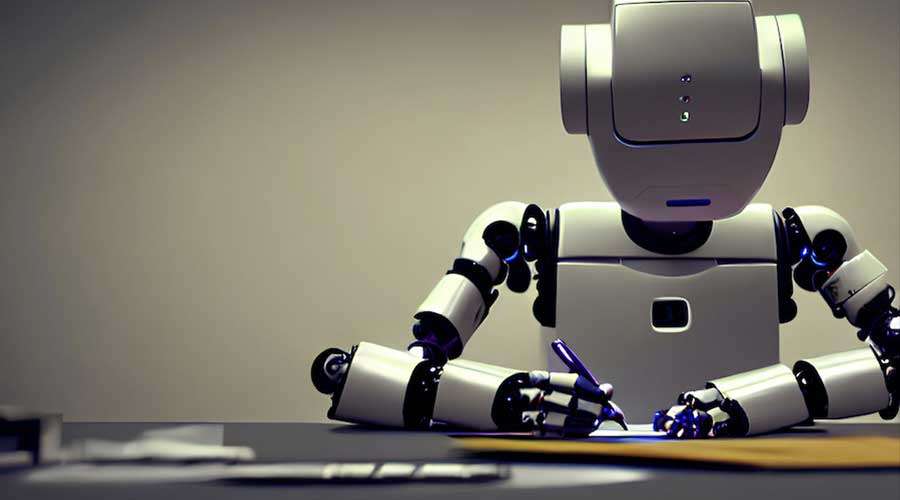Responsible Integration of AI in Education and Content Creation
The increasing influence of Artificial Intelligence (AI) is reshaping education and content creation, offering generative and predictive possibilities but also raising some ethical concerns. While certain institutions have resorted to outright banning AI tools like ChatGPT and DALL·E, let’s think about the question of, “Whether a more balanced and proactive approach is better than outright banning AI?” This essay talks about the issues of AI in education, particularly for students and content creators, focusing on the need for proper training and expectations in education. This includes ethical AI use, transparent guidelines, and the cultivation of a balanced relationship that enhances rather than compromises the learning and creative processes.
Introduction
Artificial Intelligence (AI) has become an undeniable technology, divrsely spreading itself into all aspects of our lives. As we can see the rise of AI and technologies, particularly in education and content creation, there are arguments about the opportunities and challenges they bring. Institutions have responded to the growing influence of AI by imposing bans on tools like ChatGPT and DALL·E. These concerns are about the potential misuse of them and declining creativity in students. In the race for dominance in the AI world by tech companies like Google and Microsoft, a critical reflection of how we navigate and integrate AI into our daily lives becomes more necessary (Gray, 2020).
1. The Student Perspective
For students, the impact of AI is a double-edged sword, presenting both unprecedented opportunities and ethical challenges. The open access to personalized tutoring, tasks done more easily, and rapid access to information are fascinating. However, there is a growing unease about the ethical use of AI in academic settings, with institutions fearing students may misuse AI tools for unfair advantages. Completely relying on AI for homework leads to academic dishonesty, loss of creativity and diversity and beats the purpose of educational institutions. It is also unfair to students who put in their original work to compete against students who rely on AI. This creates unhealthy competition, biased scaling and other ethical concerns.
Students rely on AI as it is very easy to use, it’s fast, and can give amazing answers within a click of a button. As helpful as this is, it diminishes critical thinking skills, substitutes the hard work that is expected from students and beats the purpose of education. A student can get good grades using AI but they don’t learn anything in this process. So in my opinion, the ethical considerations surrounding AI use in education demands a more balanced response. Rather than fully banning AI, educational institutions should focus on providing in-depth and ethical education on responsible AI use. This includes planting a sense of integrity and responsibility in students and guiding them on the ethical boundaries of AI-assisted learning. They should know that AI is made to help students broaden their minds and give them personalized help, rather than substituting hard work and getting AI to do all the work.
As AI is being integrated into every aspect of our lives from driving to educational use to even smart toothbrushes, I feel that even banning AI may hinder educational progress. It is inevitable to keep AI on the sidelines and restrict its entry into education and content creation, but informed guidance can empower students to treat AI responsibly, ensuring that academic integrity is preserved (Bittencourt et al., 2020).
Moreover, the integration of AI in education also requires a shift in teaching methods. Educators should embrace AI as a tool that personalizes learning experiences, catering to individual student needs and providing targeted support. This shift requires institutions to revisit traditional teaching methods and the development of syllabus that prepare students for a future where AI is an integral part of the educational world (Bittencourt et al., 2020). AI, along with VR, is also being used to help students with special needs understand course content better and get out of the traditional teaching methods.
2. A Content Creator’s Dilemma
Content creators find themselves in a dilemma between the innovation and ethical dilemmas as tools like ChatGPT and DALL·E revolutionize the creative process. These tools push the boundaries of what is possible in generating written and visual content, but concerns arise regarding potential misuse leading to a loss of originality and creativity. An example of this is the Remix mini assignment posted last week. I don’t consider myself the most creative person but using tools like DALL-E helped me remix images together perfectly within a click of a button.
The effective integration of AI into content creation requires a mindful approach. Content creators should view AI as a complementary tool, enhancing their abilities rather than replacing them. While these tools assist in brainstorming, drafting and editing, preserving the human touch remains non-negotiable in creating authentic and meaningful content. Striking a balance between using AI for efficiency and maintaining human creativity is crucial for the evolution of content creation.
Ethical considerations surrounding AI-generated content add another layer of complexity. Clear guidelines on the use of AI-generated content must be established, especially in fields of writing and the arts. Creators should be mindful of the ethical problems of using AI tools and must work harder to maintain the integrity of their work. Additionally, industry-wide standards for the ethical use of AI in content creation should be developed. This ensures transparency and proper crediting from creators (Khosravi et al., 2022).
3. Guidelines for A Responsible Integration
As AI is rapidly advancing, it becomes more important to establish comprehensive guidelines for its responsible entry into education and content creation. Instead of imposing outright bans, educational institutions should focus on educating students on the responsible use of AI. This will help encourage transparency and to implement effective monitoring systems. Content creators should follow the set standards. This will help ensure that ethical considerations guide the integration of AI tools into their creation (Luan et al., 2020).
Furthermore, the development of industry-wide standards for AI-generated content is crucial. This involves disclosing any use of AI in content creation and ensuring appropriate credit to human creators. These standards will guide the responsible integration of AI into the creative process, fostering an environment where ethical considerations are of the greatest importance.
Conclusion
The impact of AI requires a more balanced approach rather than implementing bans on it. As students and content creators discover the uses of this new technological world, using its benefits is great as long as they are mindful of decreasing potential risks. Rather than resorting to bans, creating a culture of responsible AI use, ethical considerations, and continuous spread of education will ensure that we navigate the AI revolution with wisdom and innovation!
The opportunities presented by AI are immense, but so are the ethical considerations. For students, education on responsible AI use is key to preserving academic integrity. Content creators must embrace AI complementary to their creativity rather than a substitution. Understanding the balance between efficiency and the preservation of the human touch is where the line lies. Industry-wide standards for AI-generated content are crucial to ensure transparency and proper acknowledgement. Instead of imposing bans, developing a culture of responsible AI use, guided by ethical considerations, will pave the way for a future where AI enhances our lives without compromising the essence of learning, creativity, originality and thoughtfulness.
(I sincerely acknowledge that I have used ChatGPT for editing and reviewing purposes in this essay, but all the ideas and solutions presented are found on my own.)
Sources:
Gray, S. L. (2020). Artificial intelligence in schools: Towards a democratic future. London Review of Education, 18(2), 163–177. https://doi.org/10.14324/LRE.18.2.02
Bittencourt, I. I., Cukurova, M., Muldner, K., Luckin, R., & Millán, E. (Eds.). (2020). Artificial Intelligence in Education: 21st International Conference, AIED 2020, Ifrane, Morocco, July 6–10, 2020, Proceedings, Part I (Vol. 12163). Springer International Publishing. https://doi.org/10.1007/978-3-030-52237-7
Khosravi, H., Shum, S. B., Chen, G., Conati, C., Tsai, Y.-S., Kay, J., Knight, S., Martinez-Maldonado, R., Sadiq, S., & Gašević, D. (2022). Explainable Artificial Intelligence in Education. Computers and Education: Artificial Intelligence, 3, 100074. https://doi.org/10.1016/j.caeai.2022.100074
Luan, H., Geczy, P., Lai, H., Gobert, J., Yang, S. J. H., Ogata, H., Baltes, J., Guerra, R., Li, P., & Tsai, C.-C. (2020). Challenges and Future Directions of Big Data and Artificial Intelligence in Education. Frontiers in Psychology, 11. https://www.frontiersin.org/articles/10.3389/fpsyg.2020.580820

